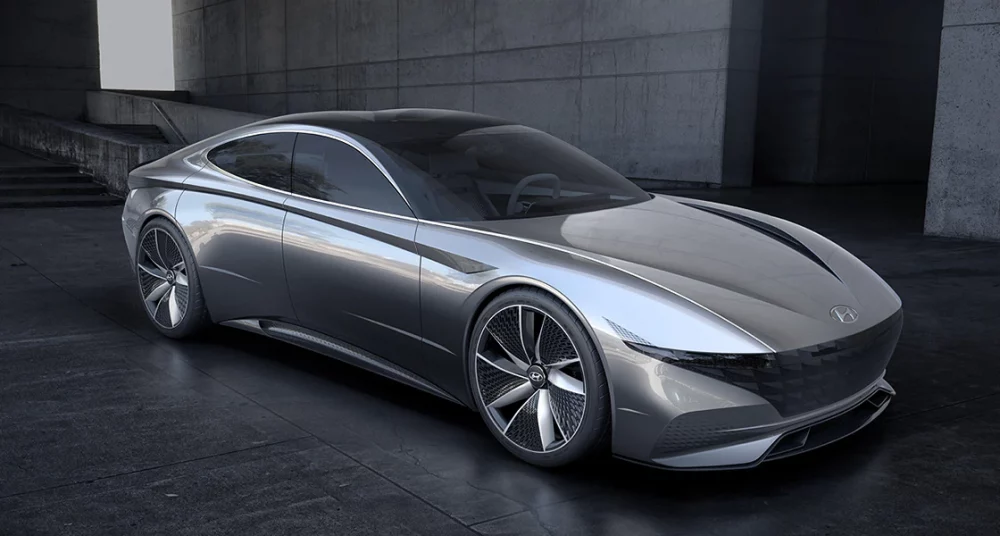In the fiercely competitive automotive industry, design plays a pivotal role in shaping consumer preferences and brand identity. Hyundai, the South Korean automotive giant, has undergone a remarkable evolution in its design philosophy over the years. From practical and utilitarian beginnings to embracing sleek and innovative aesthetics, Hyundai’s design language has evolved to captivate global markets.
The Evolution of Hyundai’s Design Language
Early Years: Functionality Meets Affordability
Hyundai’s journey in automotive design began with a focus on affordability and reliability. During its early years, the company’s designs were straightforward and practical, appealing to budget-conscious consumers looking for dependable transportation.
Examples: Hyundai Excel, Hyundai Sonata (1985)
Embracing Fluidic Sculpture: A Paradigm Shift
The turning point for Hyundai’s design ethos came with the introduction of the Fluidic Sculpture design philosophy. Emphasizing flowing lines and a sense of motion, Fluidic Sculpture marked a departure from conservative styling to more dynamic and visually appealing designs.
Case Study: Hyundai Sonata (2011): The sixth-generation Sonata showcased Hyundai’s commitment to Fluidic Sculpture with its bold curves and striking silhouette, setting new design standards in the midsize sedan segment.
Modern Sensibility: Sensuous Sportiness
Building on the success of Fluidic Sculpture, Hyundai introduced the Sensuous Sportiness design language. This approach aims to harmonize emotional appeal with functional beauty, focusing on proportion, architecture, styling, and technology integration.
Example: Hyundai Tucson (2021): The latest iteration of the Tucson exemplifies Sensuous Sportiness with its parametric jewel pattern grille, sculpted surfaces, and futuristic lighting elements.
Key Elements of Hyundai’s Design Language
1. Sensuous Sportiness
Hyundai’s current design philosophy, Sensuous Sportiness, embodies four key elements:
Proportion: Emphasizes the vehicle’s stance and overall balance.
Architecture: Defines the underlying structure and form of the vehicle.
Styling: Incorporates distinctive details and character lines.
Technology: Integrates advanced lighting and digital design elements.
2. Parametric Dynamics
Introduced with the Tucson, Parametric Dynamics involves intricate patterns and textures that enhance visual interest and aerodynamic efficiency.
Case Study: Hyundai Ioniq 5: The electric crossover features Parametric Pixel lighting, creating a signature light display that integrates seamlessly with the vehicle’s design.
3. Eco-Friendly Designs
In line with global sustainability trends, Hyundai incorporates eco-friendly materials and aerodynamic shapes to enhance fuel efficiency and reduce environmental impact.
Statistic: Hyundai Kona Electric achieves an impressive range of over 400 kilometers on a single charge, while maintaining a sleek and aerodynamic exterior.
Also Read : Meet the Talented Team Behind Hyundai Car Designs
The Impact of Hyundai’s Design Language
Global Recognition and Market Penetration
Hyundai’s commitment to innovative design has garnered international acclaim and contributed to its global market presence.
Market Share: Hyundai’s market share in the U.S. continues to grow, supported by appealing designs that resonate with diverse consumer preferences.
Brand Identity and Consumer Perception
Effective design language has strengthened Hyundai’s brand identity, positioning it as a contender in both mainstream and premium segments.
Consumer Preference: Surveys indicate that Hyundai’s modern designs influence consumer purchase decisions, with aesthetics being a significant factor.
Future Directions: Innovations and Beyond
Electric Vehicles and Beyond
As Hyundai expands its electric vehicle lineup, future designs will likely prioritize aerodynamics, range optimization, and cutting-edge technology integration.
Innovation: Hyundai Prophecy Concept showcases the brand’s vision for future electric vehicle designs, emphasizing aerodynamic efficiency and autonomous driving capabilities.
Conclusion
Hyundai’s design language has evolved significantly, from functional beginnings to embracing innovative and emotive aesthetics. Through Fluidic Sculpture and Sensuous Sportiness, Hyundai has not only captivated consumers but also set new benchmarks in automotive design. As the industry shifts towards electrification and autonomous driving, Hyundai’s commitment to design innovation ensures that its vehicles remain at the forefront of automotive excellence.
By decoding Hyundai’s design language, we gain insights into how thoughtful design can shape consumer perceptions, enhance brand identity, and drive technological innovation in the automotive industry.
This article provides a comprehensive overview of Hyundai’s design evolution, key design elements, case studies, and future directions, offering readers valuable insights into the intricate world of automotive design.
(source)
Originally posted 2024-07-19 06:36:00.
